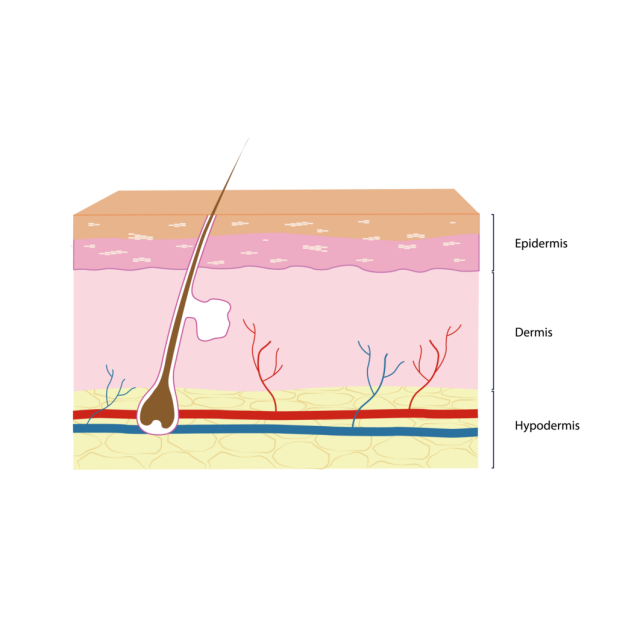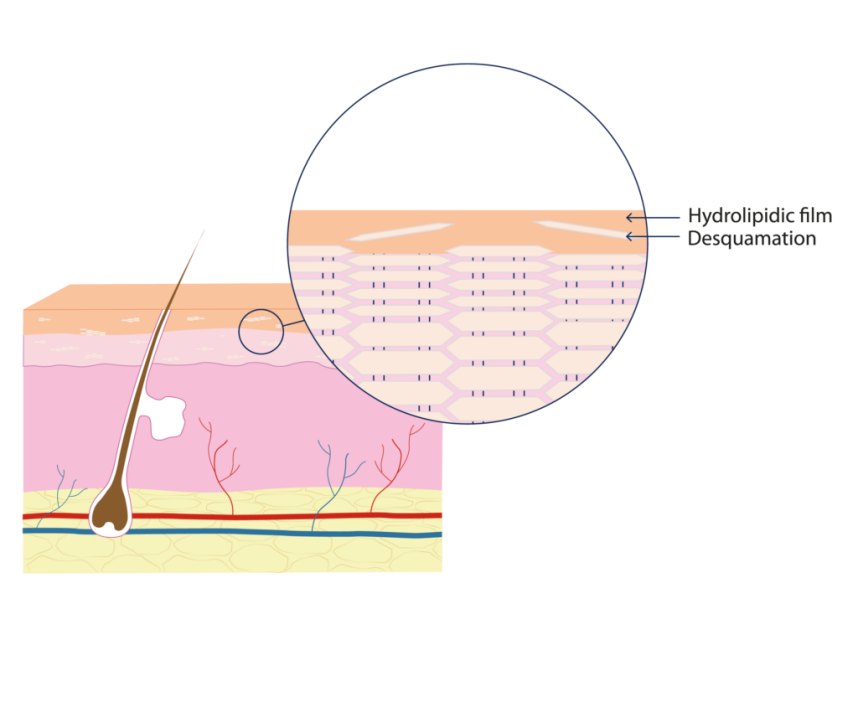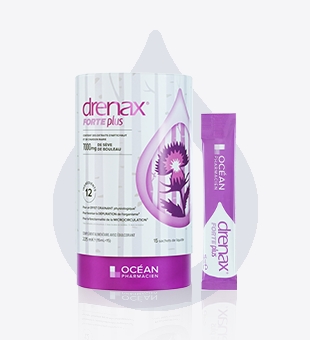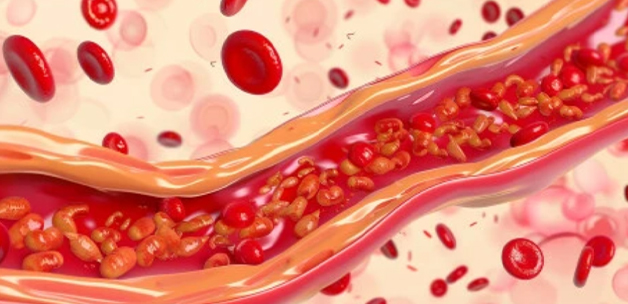Il n’est pas rare d’avoir la peau qui tiraille ou qui démange autour du nez lorsqu’on souffre d’un rhume, d’une rhinopharyngite ou d’une sinusite pendant l’hiver, ou d’allergies au printemps. La peau est alors rouge et sèche et une sensation d’inconfort apparaît. Pour comprendre les causes de cette réaction cutanée, il faut s’intéresser de plus près à la physiologie de la peau.
La peau, une barrière essentielle pour l’organisme
La peau est le plus grand organe. Elle est composée de 3 couches : l’épiderme, le derme et l’hypoderme. L’épiderme est la couche la plus externe et est visible. Dans certaines zones du corps, la peau est plus épaisse, comme au niveau des talons et des narines, où la peau des ailes du nez mesure 3,5 mm d’épaisseur1. La peau nous protège de nombreux agresseurs extérieurs, comme l’air froid et sec, les rayons UV et la pollution.
Lorsque le corps est exposé aux agressions extérieures, la barrière hydrolipidique de la peau empêche la pénétration de substances étrangères et maintient l’hydratation de la peau. Les lipides (ou graisses) et l’acidité du film hydrolipidique empêchent la croissance des bactéries pathogènes et protègent les bactéries résidentes sur la peau2. Maintenir cette barrière cutanée en bon état est donc essentiel pour assurer son rôle protecteur.

Why does the skin on the nose peel?
Desquamation is the physiological or normal shedding of mature epidermal cells, known as squama. The “scaling skin” is the visible result of this process. Frequent secretions from the nose, combined with frequent nose-blowing, can provoke a more important desquamation. The scaling skin can cause discomfort when visible on the face.

Why does the skin on the nose become red?
When suffering from a cold, rhinopharyngitis, sinusitis or allergies, we tend to blow our noses more than usual. Repeated nose-blowing causes friction on the skin barrier of nasal wings and gradually alters the hydrolipidic film that forms the skin barrier. Foreign substances can then penetrate the epidermis more easily, which can lead to a local inflammatory response. This local inflammatory response is manifested by visible redness on the skin around the nose and pain when blowing the nose.
How to remedy to a dry and irritated nose-contour skin?
Dry skin lacks both water and lipids. During the winter or seasonal allergies, some tingling, tightness and incomfort sensations may be feel. In the case of dry and irritated skin, it is recommended to apply a soothing and moisturising cream to reduce discomfort and redness, and help retain water in the epidermis.
Which active ingredients are best for repairing and soothing the skin around the nose?
To take care of the irritated nose contour skin, some active ingredients may be chosen.
Centella asiatica is among those scientifically recognised for their repairing properties. Centella asiatica is an ancestral plant of multiple origins (Asian, African, Indian), included in the Indian pharmacopoeia. It has been reported in scientific literature that the application of Centella asiatica repairs the skin barrier in subjects suffering from dry skin3.
In addition, it contributes to the treatment of skin disorders thanks to its healing and anti-inflammatory properties. In particular, it is used in the treatment of surgical wounds and skin ulcers4.
Golden kelp is recognised for its soothing properties. Laminaria ochroleuca, more commonly known as golden kelp because of its colour, is used to soothe the skin, reducing inflammation and redness5. Several compounds found in this kelp have anti-oxidant, anti-inflammatory and anti-UV properties 6-7 that can be beneficial for the dry skin around the nostrils. Laminaria ochroleuca extracts are used as natural skin soothing ingredients.
A combination of Centella asiatica and Laminaria ochroleuca extracts is safe and effective in repairing, soothing and moisturising the skin around the nose.

References:
1. Alharethy S, Mousa A, Alharbi A, Aldrees T, AlQaryan S, Ju Jang Y. Does skin thickness affect satisfaction post rhinoplasty? Middle Eastern population as an example. Saudi Med J. 2018;39(12):1238-41.
2. Alexandre Mélissopulos, Christine Levacher, La peau, structure et physiologie, éditions Lavoisier.
3. Anggraeni S, Damayanti, Umborowati MA., Prakoeswa CRS. The Role of Aloe vera and Centella asiatica to the Improvement of Skin Barrier Function in Indonesian Batik Workers. ndian Journal of Forensic Medicine & Toxicology, July-September 2021, Vol. 15, No. 3 2805-2811
4. Sunilkumar, Parameshwaraiah S, Shivakumar HG. Evaluation of topical formulations of aqueous extract of Centella asiatica on open wounds in rats. Indian J Exp Biol 1998;36:569-72
5. Ferreira MS, Resende DISP, Lobo JMS, Sousa E, Almeida IF. Marine Ingredients for Sensitive Skin: Market Overview. Mar Drugs. 2021;19(8):464.
6. Katiyar SK, Ahmad N, Mukhtar H. Green tea and skin. Arch Dermatol. 2000;136(8):989–94.
7. Katiyar SK, Elmets CA, Agarwal R, Mukhtar H. Protection against ultraviolet-B radiation-induced local and systemic suppression of contact hypersensitivity and edema responses in C3H/HeN mice by green tea polyphenols. Photochem Photobiol. 1995;62(5):855–61.

 FR
FR
 EN
EN




